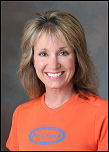Marathon Training 101 By Susan S. Paul, MS, TSF Training Program Director

Marathon training is both a science and an art. Science is far from perfect, coaching is far from perfect, and exercise science is very far from perfect. Exercise science is a relatively new field that is still rapidly evolving.
The American College of Sports Medicine (ACSM) is the governing body of exercise science. The ACSM has established guidelines based on the latest research that should be incorporated into any exercise program, including marathon training.
Stress is not all bad- In order to bring about positive physical changes, physically stressing the body is necessary. In this case, physical stress is otherwise known as exercise training….specifically running. The components of fitness determine the amount of stress and how it is best applied to the body.
The 3 components of fitness are frequency, duration, and intensity of exercise. These 3 components can be applied to any fitness program and manipulated in a variety of ways to produce improvements in one’s fitness.
1. Frequency- Frequency is the most basic element of any exercise program. Research indicates that exercising 3-5 times per

2. Duration- Duration refers to the amount of time or the distance covered during an exercise session. Duration is most often dictated by the goal of the exerciser. If the goal is to run a marathon, then the duration of the exercise sessions will be gradually increased over time to roughly the distance of the marathon, 26.2 miles. Most coaches agree that novice runners will need approximately 6 months to build up to the mileage of a marathon.
3. Intensity- Intensity refers to the level that the exercise is performed. Many coaches believe that intensity is the key to training. Intensity can be measured by heart rate monitoring, breathing rates, or perceived exertion. Perceived exertion is easy…if it feels hard it probably is hard!! Heart rate monitoring is a more objective way of monitoring intensity. Age-predicted heart rate formulas can help exercisers determine their appropriate intensity level.
Training principles to consider:
Various training principles are also applied to exercise programs. Progressive overload andspecificity are two training principles that should be incorporated into a fitness regime.
Progressive overload
Stress or overload the body and it responds to the new load by becoming stronger….simple enough, however, overload the body too much and it responds by breaking down or injury. So gradual, incremental overloading is essential. The body’s cells are very sensitive and respond differently. Different tissue cells respond at different rates, for example, muscle cells will respond quicker than connective tissue cells. Overuse injuries, such as tendonitis, Iliotibial Band Syndrome, stress fractures and shin splints are the result of too much, too soon.
Specificity
Fitness is very specific to training. If you want to run a marathon, you need to run. If you want to cycle across the country, you need to cycle. Cross-training is a supplement to your training, not a substitute.
Putting it all together- Consistency and moderation are the keys to a successful training program. Doing the least amount of the most specific training that causes gradual improvement at the right times is economy of effort. Finish your workout sessions feeling as though you could have done a bit more. When in doubt, leave it out! Forget about what you used to do……the fact that you ran track in high school is great, but it doesn’t count now. Fitness is ever changing. Easy training days, hard training days, days OFF, sleep and nutrition are all equally important.
Getting to know yourself is the real gift of fitness. Knowing when to listen to your body and when to ignore it is the sign of a real athlete. Are you really fatigued or are you just looking for an excuse to miss the workout? Surround yourself with supportive people and a positive atmosphere. Find friends and training partners that are not going to sabotage your workout. Lose your headphones and listen to your feet pounding the pavement and your breathing. Feel the rhythm of your run…..listen to the music going on inside of you!
“Don’t you hear it?” she asked. I shook my head no… and then suddenly there was music everywhere and it went on for a very long time and when I finally found words all I could say was thank you.’ B. Andreas
Listen and your body will thank you!
Use Facebook to Leave a Comment - We'd love to hear from you.






